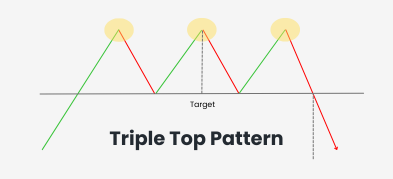Important Information
This website is managed by Ultima Markets’ international entities, and it’s important to emphasise that they are not subject to regulation by the FCA in the UK. Therefore, you must understand that you will not have the FCA’s protection when investing through this website – for example:
- You will not be guaranteed Negative Balance Protection
- You will not be protected by FCA’s leverage restrictions
- You will not have the right to settle disputes via the Financial Ombudsman Service (FOS)
- You will not be protected by Financial Services Compensation Scheme (FSCS)
- Any monies deposited will not be afforded the protection required under the FCA Client Assets Sourcebook. The level of protection for your funds will be determined by the regulations of the relevant local regulator.
Note: Ultima Markets is currently developing a dedicated website for UK clients and expects to onboard UK clients under FCA regulations in 2026.
If you would like to proceed and visit this website, you acknowledge and confirm the following:
- 1.The website is owned by Ultima Markets’ international entities and not by Ultima Markets UK Ltd, which is regulated by the FCA.
- 2.Ultima Markets Limited, or any of the Ultima Markets international entities, are neither based in the UK nor licensed by the FCA.
- 3.You are accessing the website at your own initiative and have not been solicited by Ultima Markets Limited in any way.
- 4.Investing through this website does not grant you the protections provided by the FCA.
- 5.Should you choose to invest through this website or with any of the international Ultima Markets entities, you will be subject to the rules and regulations of the relevant international regulatory authorities, not the FCA.
Ultima Markets wants to make it clear that we are duly licensed and authorised to offer the services and financial derivative products listed on our website. Individuals accessing this website and registering a trading account do so entirely of their own volition and without prior solicitation.
By confirming your decision to proceed with entering the website, you hereby affirm that this decision was solely initiated by you, and no solicitation has been made by any Ultima Markets entity.
I confirm my intention to proceed and enter this websiteThe 70/30 Rule: Warren Buffett’s Approach
Warren Buffett, one of the world’s most successful investors, has a straightforward approach to investing that has guided his remarkable success. One of his key strategies is the 70/30 rule, a simple yet powerful concept for managing investments and achieving long-term growth.
In this article, we’ll break down what the 70/30 rule is, why it works, and how you can apply it to your own portfolio to optimize your investment strategy.
What Is the 70/30 Rule?

The 70/30 rule is all about balancing risk and growth in your portfolio by allocating a specific percentage of your investments to different asset classes. The rule suggests that:
- 70% of your portfolio should be allocated to stocks (equities) for growth.
- 30% should go into bonds or other fixed-income investments to provide stability.
To explain, these percentages are chosen because stocks generally offer higher growth potential but come with more risk, while bonds provide a lower-risk, stable income, helping to balance your overall portfolio.
This strategy allows you to benefit from the growth potential of stocks while using the safer, income-generating power of bonds to protect against market downturns.
Why the 70/30 Rule Works
Warren Buffett’s 70/30 rule is built on a few key principles:
1. Diversification
By splitting your investments between stocks and bonds, you diversify your portfolio, which helps reduce overall risk. Diversification means considering different aspects of risk and return in your portfolio. Stocks can provide high returns, but they come with volatility. On the other hand, bonds offer more stability and consistent returns, especially during periods of market uncertainty.
2. Risk Management
The rule strikes a balance between high-risk, high-reward stocks and low-risk, steady-return bonds. This way, your portfolio isn’t overly exposed to market swings, but you still get the potential for significant growth over time. Ultimately, investors must decide how much risk they are comfortable with when applying the 70/30 rule.
3. Long-Term Growth
Buffett’s philosophy encourages long-term thinking. Stocks tend to outperform bonds in the long run, but they can be unpredictable in the short term. The 70% stock allocation allows you to harness long-term growth, while the 30% bond allocation ensures that your portfolio remains more resilient in the face of market volatility.
Allocating your financial energy toward long-term investments can help you stay committed to your goals.
Applying the 70/30 Rule to Your Portfolio

Here’s how you can apply the 70/30 rule to your own investments:
1. Stocks (70%)
Allocating 70% of your portfolio to stocks allows you to take advantage of the potential for high growth. You can focus on:
- Index Funds: These funds track the overall market or specific sectors, offering broad exposure to different stocks. They are low-cost and a good way to gain diversified exposure to the market.
- Blue-Chip Stocks: These are well-established companies with a history of stable growth and reliable dividends (e.g., Apple, Coca-Cola, Johnson & Johnson).
The key here is that stocks provide the potential for significant growth over time, though they come with higher risk.
2. Bonds (30%)
The other 30% of your portfolio should be in bonds. Bonds offer a more stable and predictable return compared to stocks. You can invest in:
- Government Bonds: These are considered low-risk and provide steady income.
- Corporate Bonds: These offer higher returns than government bonds, but they come with more risk. Some companies issue bonds to refinance existing debt at a better interest rate, which can improve their financial stability.
Bonds are especially valuable during times of market volatility because they can help stabilize your portfolio. They provide a regular income stream through interest payments, and bondholders are typically paid regular interest, making bonds a reliable source of income. Bonds also tend to be less affected by short-term market movements.
Benefits of the 70/30 Rule
The 70/30 rule is not just about a simple asset allocation; it offers several key benefits for investors. This rule can also prove to be very beneficial for those who want to maintain a balance between growth and stability in their portfolios. Here are a few reasons why this rule works so well:
1. Balanced Growth and Stability
One of the main benefits of the 70/30 rule is that it creates a balance between growth (from stocks) and stability (from bonds). The 70% in stocks gives your portfolio the opportunity to grow, while the 30% in bonds provides a safety net during market downturns.
2. Reduced Emotional Decision-Making
Having a set allocation helps take the emotion out of investing. When markets become volatile, it’s easy to get caught up in the fear and excitement. Following the 70/30 rule can help reduce the fear of losing money during market downturns, as your portfolio is structured to manage risk. With the 70/30 rule, you know that most of your portfolio is in stable, low-risk assets, which helps you stay calm and stick to your long-term plan.
3. Long-Term Financial Health
The rule encourages long-term thinking. Over the years, stocks tend to outperform bonds, but with bonds offering steady returns, your portfolio stays balanced and resilient against market turbulence. Following this strategy can help you build wealth gradually while minimizing the impact of short-term market fluctuations. Maintaining a balanced portfolio is essential for healthy finances over the long term.
How to Adjust the 70/30 Rule for Your Needs

The 70/30 rule is a great guideline, but it is important to remember that it is also flexible. When adjusting the rule, consider what you can afford to invest based on your average monthly income and after accounting for taxes.
Reviewing your paycheck and understanding your take-home pay is important when deciding how much to allocate to investments. Depending on your goals, age, risk tolerance, and market conditions, you might adjust the ratio. For example:
- If you’re younger and can handle more risk, you might want to allocate more to stocks (e.g., 80/20 rule).
- If you’re closer to retirement or have a lower risk tolerance, you may want to allocate more to bonds (e.g., 50/50 rule).
The point is to maintain the balance between risk and reward that works best for you.
Conclusion
Warren Buffett’s 70/30 rule is a simple, effective way to manage your investments, offering a balance between growth and stability. By allocating 70% to stocks and 30% to bonds, you create a diversified portfolio that can withstand market volatility while still allowing for long-term growth.
As Warren Buffett wisely said:
“Do not save what is left after spending, but spend what is left after saving.”
Warren Buffett
This philosophy not only applies to budgeting but also to investing. The 70/30 rule encourages you to prioritize long-term growth while maintaining financial stability.
If you’re ready to start building a more balanced portfolio, follow Warren Buffett’s advice and apply the 70/30 rule to your own investment strategy with Ultima Markets today.
Disclaimer: This content is provided for informational purposes only and does not constitute, and should not be construed as, financial, investment, or other professional advice. No statement or opinion contained here in should be considered a recommendation by Ultima Markets or the author regarding any specific investment product, strategy, or transaction. Readers are advised not to rely solely on this material when making investment decisions and should seek independent advice where appropriate.












